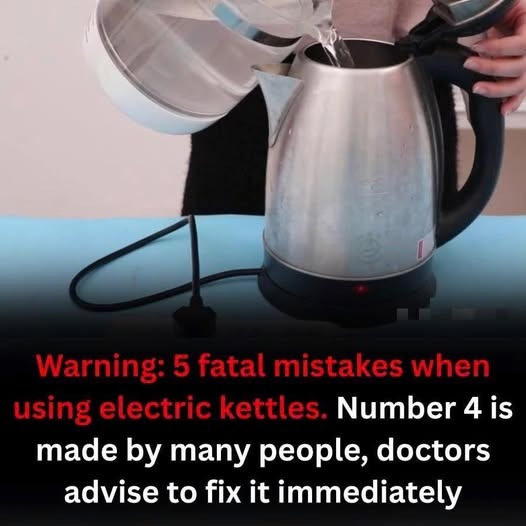2. Turning on the kettle before adding water
Some people plug in the kettle first, then add water. This is a dangerous habit.
Electric kettles usually have high wattage (from 1000W to over 2000W). Once plugged in, they begin heating immediately. Without water, the heating plate can overheat within seconds, causing permanent damage or increasing the risk of a fire.
Always make sure the kettle contains water before plugging it in.
3. Neglecting to clean the base
While many people clean the inside and exterior of the kettle, they often forget about the electric base, which is a critical component.
If water spills and is not wiped up in time, it can lead to moisture buildup, dust accumulation, and even rust inside the electrical parts. This can cause the kettle to function poorly or become a fire hazard. Dust inside vents or power contacts can also lead to weak or unsafe electrical connections.
Make it a habit to regularly wipe the base dry with a soft cloth to keep it clean and dry.
4. Not removing limescale buildup
After some time, the bottom of the kettle may develop a white or yellowish residue — this is limescale, mainly from calcium and magnesium in tap water. If not cleaned, it can:
Increase the time needed to boil water
Create an unpleasant smell or taste
Pose potential health risks if residue mixes with the water
To clean the kettle, add about one small bowl of water with 2–3 tablespoons of white vinegar or a few slices of lemon. Boil the mixture, let it sit for about 30 minutes, then rinse thoroughly. Do this 1–2 times a month, especially if you’re using hard tap water.
5. Buying cheap kettles without checking the inner material
Many people focus on price when buying a kettle and overlook the inner material. Most kettles use stainless steel linings, but not all types are safe.
Low-grade stainless steel may release harmful substances when heated. The safest options are 304 or 316 stainless steel, both of which are food-grade materials known for their durability and resistance to leaching.
Choose kettles from reputable brands that clearly state the material used on the packaging. Spending a bit more for better quality helps ensure your safety and extends the appliance’s lifespan.
ADVERTISEMENT

